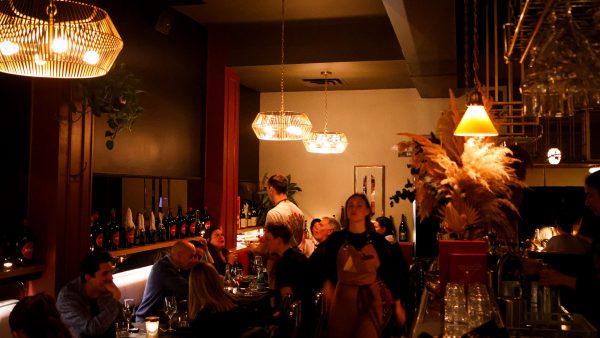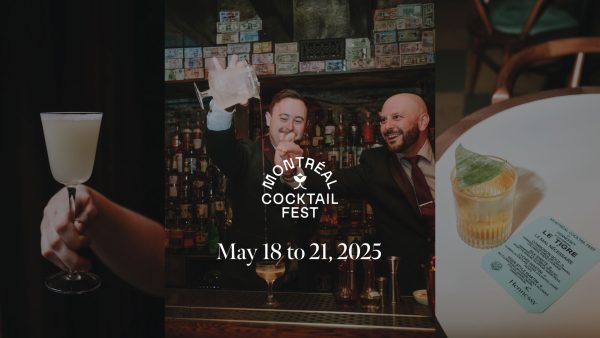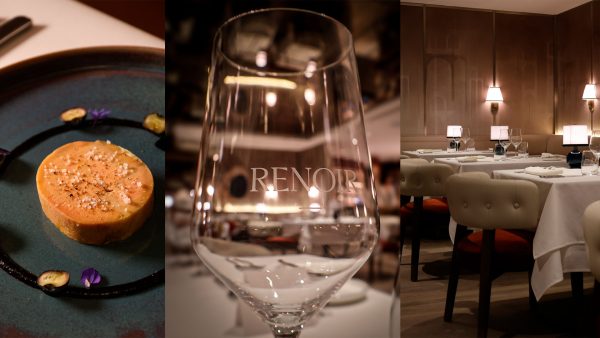Interview with Cécile Roudaut, Master Blender from St-Rémy
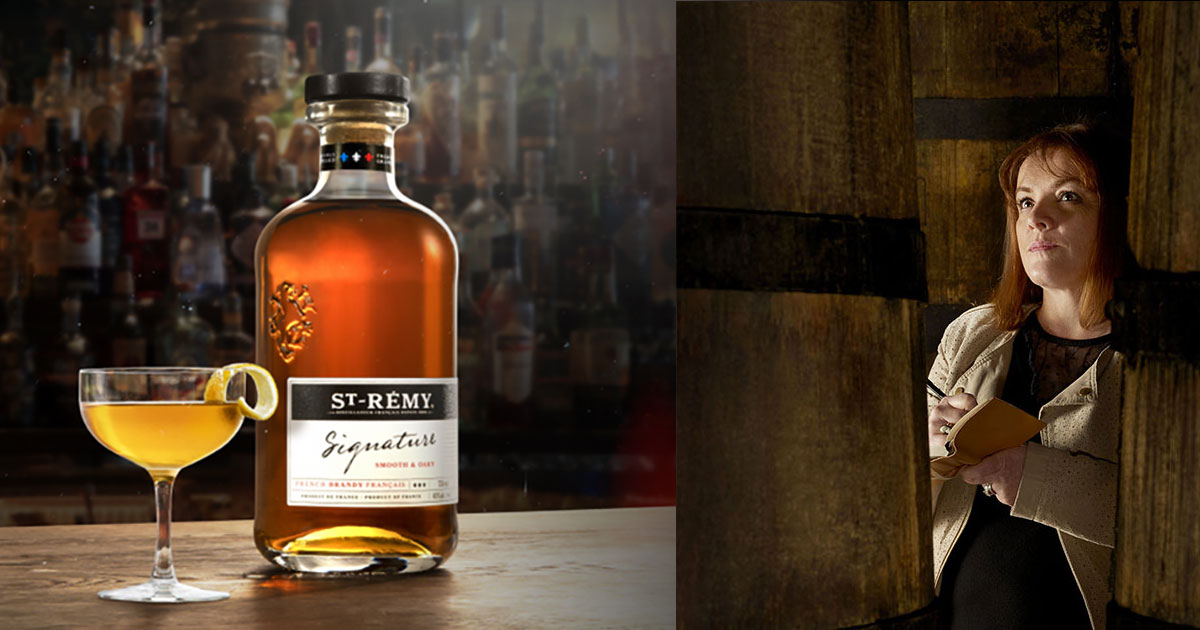
Ah the holidays, even if they are still special this year, they will always have a little festive side and very often alcohol is one of the pleasures of the table. On the occasion of the launch of St-Rémy Signature, a brand new St-Rémy brandy, a member of the Rémy Martin family, I had the chance to meet, at the Hotel William Gray, with Cécile Roudaut, master assembler from St-Rémy.
The Story of St-Rémy
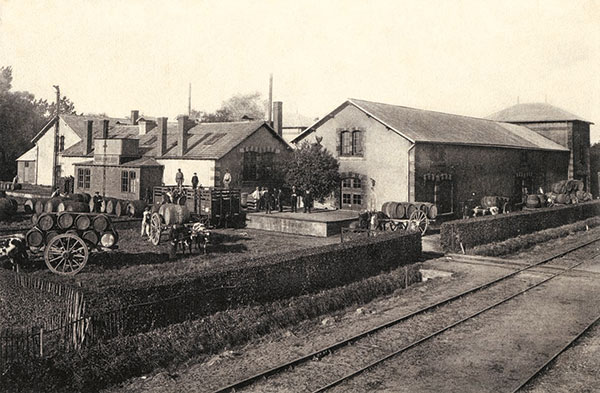
The original St-Rémy Distillery at Machecoul
Photo: St-Rémy
Normand Boulanger : First of all, for those who do not know St-Rémy, what is the genesis of this great Brandy family?
Cécile Roudaut : To do this, we have to go back in history. At the end of the 1870s, in the French vines, there is unfortunately a small insect, the vine phylloxera, which arrives and devours all the roots of the vines and when it grows up it goes up and devours all the leaves, this which results in the destruction of the vineyard of Rémy Martin, in the south of France in Cognac. And Mr. Paul-Émile Rémy Martin II, who at the time had a very successful business, found himself with more wine, more brandy and therefore more cognac.
For him, it’s catastrophic, so he sets out to find solutions. He chooses to head north and stops in the Loire Valley. In this region, the soil is much more sandy, and phylloxera cannot survive in this kind of soil. And so, the Nantes vineyards, made up of Muscadet and gros-plant, are intact. And Mr. Rémy Martin observed that the grape varieties are very close to the folle-blanche, used in cognac.
So he set up a distillery in the small village of Machecoul, near the port of Nantes, which allows him to have the same business model as in Cognac. He also built a private connection with the help of a railway between the distillery and the Port of Nantes.
So the distillery opened doors in 1886, on the same concept as Rémy Martin cognac, therefore selected elegant, fine, subtle eaux-de-vie, properly distilled and above all aged in small barrels. It is important for St-Rémy, barrels of 350 litres. We have a very high ratio of wood surface which is in contact with the liquid, ie 70 cm 2. If we were in a thunderbolt, 35,000 litres, like many of those who make brandy, the surface area is only 16 cm 2. So the quality of aging will not be the same at all.
NB: And what exactly is the difference?
CR: I found a scientific experiment that was conducted at a time, they had aged the same batch of eaux-de-vie, half in small barrels and the other half in a large cask. After a year, in the little ones, it was a magnificent product, very aromatic, very balanced. To obtain the same result in the large, it was necessary to wait 8 and a half years. By using this aging process, we see that we get a very high-end and excellent product.
NB: And why, after the St-Rémy phylloxera continued, could the adventure have ended to focus on Rémy Martin?
CR: Yes, but the product was very popular, popular, affordable, versatile and user-friendly. And so the business continued and grew.
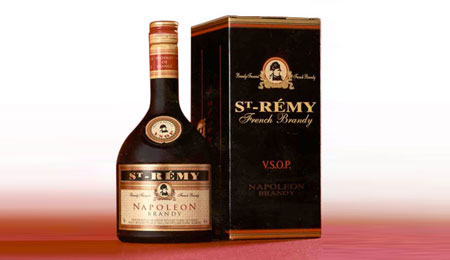
The original bottle of St-Rémy VSOP
Photo: St-Rémy
In 1917, the Fine St-Rémy was created. For the VSOP, it’s 1980 and for the XO it’s 1990. So these two products were already produced from French vineyards, as well on red grapes as on white grapes and with a multiplicity of grape varieties.
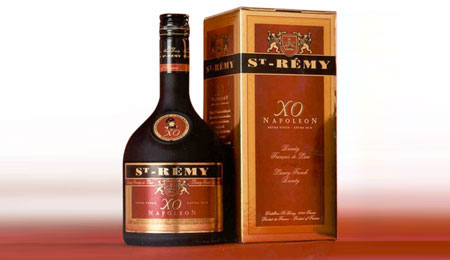
The original bottle of St-Rémy XO
Photo: St-Rémy
If we take the example of Champagne, when we receive samples of Champagne eaux-de-vie, there are vegetal notes, lees, which brings a lot of structure to the product, notes of fruit, it is the coign that dominates. For the Mediterranean Arc (Provence), these are eaux-de-vie that are subtle and more elegant with notes of peaches and apricot. In the Bordeaux region, it is very silky and very supple, the notes of fruit are on the plum here. If we come back to the Loire Valley, it is the flower that is featured with the pear. When I put it all together, whether it’s for the VSOP or the XO, I look for fruit and harmony. It is to have a product that will be well built, and that will be identical to the products of previous years. The challenge is that the raw material, well, it changes. My role is to maintain this quality, this taste, for my consumer. I don’t want him to be disappointed.
xx
In this regard, two years ago there was frost in Burgundy. So, no eaux-de-vie from this region, the grapes being reserved for the wine. I then had to compensate for the blend with eaux-de-vie from other regions. Burgundy brings tastes of exotic fruits like bananas and mango, so I had to create a blend to regain that taste and maintain the quality.
Climate change and the expertise of the Rémy-Cointreau Group

The Master Blender Cécile Roudaut
Photo: St-Rémy
NB: So climate change greatly affects your work?
CR: Yes, a lot. This year has been very difficult and I tell myself that I will have to do a lot of tastings to have a product identical to the last years.
NB: Does it help to have the expertise of the Groupe Rémy Cointreau to help you consult the different master assemblers when you have problems?
CR: Totally, it helps, firstly, for the purchasing power over the raw material, and also for the techniques. I work a lot in collaboration with my colleagues at Cognac, where we discuss innovation when creating blends. For St-Rémy Signature, for example, they tasted what I was doing to confront myself, tell me it’s good or align myself to have an even better product. There is that collaborative aspect, with the “Cask Finish” collection which is finished in rum barrels, I spoke to my colleagues in Barbados (Allen Smith and Trudiann Branker from Mount Gay). In the end, it tasted wonderful and afterwards the casks headed back to Barbados, where they will be experimenting with aging rum in ex-brandy casks. It’s super fruitful.
The creation of St-Rémy Signature
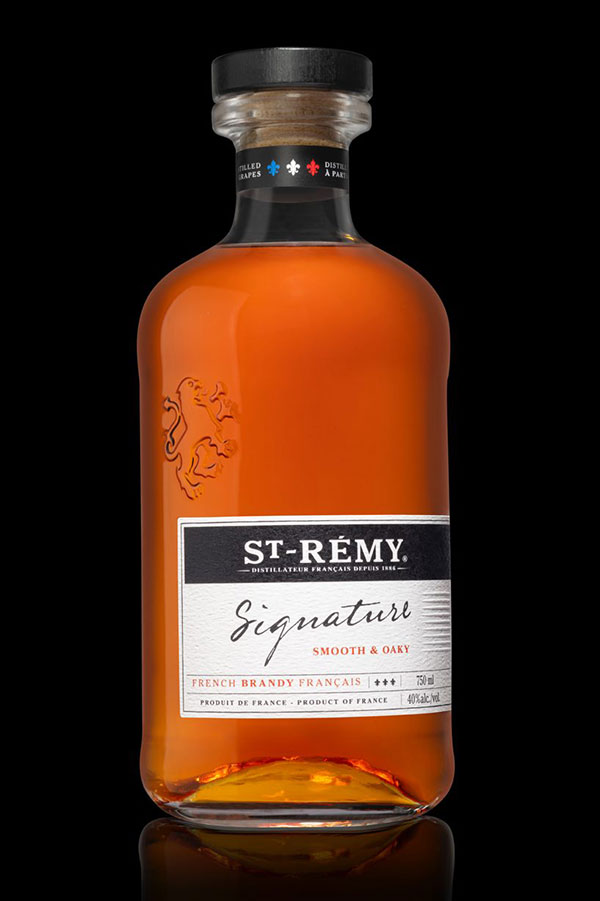
The St-Rémy Signature
Photo: St-Rémy
NB: If we were talking a bit about the St-Rémy Signature product, what about the latter?
CR: Let’s start with the barrels. In France, there are two botanical species of oak, the first is Quercus robur, also called the pedunculate oak. So, if we walk in the forest, we see the acorn which is attached to the branch by a small peduncle. When you cut out the inside of the wood, you see that the cells are large, in the range of 2mm to 5mm. If I put a product to age in this wood, we will have tannin, wood, structure. After 6 months, we have tastes of planks, of sure, which is not great, it has to be left to age for several years to have something structured and ample with notes of cinnamon, nutmeg and spices, a bit like great red wines from Bordeaux or as in Cognac, or a high maturation potential.
For the second, the Quercus petrea, or sessile oak, it has its acorn attached directly to the branch. When it is cut, the wood cells are thinner, less than 2 mm. If you age a product in the latter, you will find notes of vanilla, coconut, much more gluttony. Its composition is similar to the American white oak (Quercus alba). So the result of this keg will be at an interesting potential in less than 5–6 months. So a short maturation potential. Historically, Rémy Martin used Quercus robur, so this is also what has always been used at St-Rémy as well. When I arrived, I had this scientific curiosity, to see what it could be like if we aged the liquid in sessile oak. And there I was able to buy a dozen barrels for testing. Casks with variable roasts. At St-Rémy, we use medium-high toasts, and I wanted to see the result with lighter toasts to see if we didn’t have more butterscotch, caramel, gluttony.
And we start to taste, and we have a really nice result. But, the DNA of St-Rémy was missing, you had to add a finishing touch to tell yourself, here I have a St-Rémy brandy. So the idea was to do a second maturation in Quercus robur barrels to complement this product, which was too greedy, too young and therefore incomplete. He lacked balance. So I gave this product a taste to Mr. Hervé Buzon, the international marketing director of St-Rémy, who told me “It’s gold,” and that’s how St-Rémy was born. — Rémy Signature.
NB: It’s really very exciting this story. If you take a look at this new product, what clientele is it for?
CR: We really wanted to go to the United States, they have this preference for this sweeter, easier to drink taste (Editor’s note: Also from 1738 by Rémy Martin is extremely popular with our neighbours to the south). This is a product that is also perfect in cocktails. We wanted to rejuvenate the brandy consumer a bit.
I wanted to give this product an accessible side, easy to drink, with fruity, floral notes, it is an interesting introduction to his first experiences in terms of brandy. And for the holidays, it’s a perfect pairing with its beautiful spices that you will certainly enjoy.
Find cocktails with St-Rémy on the website
The St-Rémy Signature is available at the SAQ et à la LCBO.

